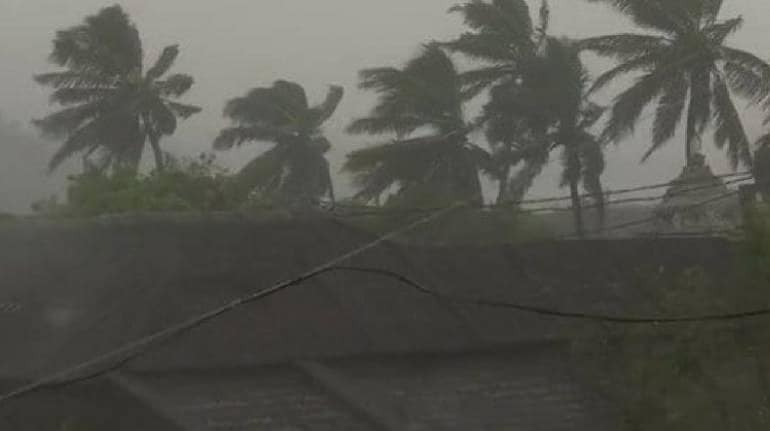



As India braces for another cyclone--Yaas, now on the eastern coast, the decade (2011-2020) bygone reported 33 cyclones, among the highest over the last five decades, official data show.
Prior to this, 35 cyclones were reported between 1967 and 1980, according to the Ministry of Statistics and Programme Implementation's Environment Statistics 2021.
During the last decade, 2019 reported the most - eight cyclones; seven in 2018 and five in 2020.
Last week, India’s western coast experienced an extremely severe cyclonic storm 'Tauktae’ along the Arabian Sea which caused significant damage to property and lives. The cyclone is said to have made one of the strongest landfalls recorded in Gujarat.
The cyclone was declared equivalent of a category 3 hurricane at landfall, with maximum sustained winds estimated at 125 mph, the Weather.com reported, citing the U.S. Joint Typhoon Warning Center. A cyclone in June 1998 which claimed an estimated 1,320 lives, was the only other category 3 (hurricane) which made landfall in Gujarat as per modern-era records dating to the 1970s, the report noted.
On an average, five cyclones develop over the North Indian Ocean in a year, four over the Bay of Bengal and one over the Arabian Sea. "Studies show a decreasing trend in the frequency of formation of cyclonic storms over the Bay of Bengal and an increasing trend over the Arabian Sea, based on the data during 1965-2020," a government reply to the Lok Sabha in March 2021 said.
Five cyclones were reported in 2019 over the Arabian Sea, against the normal of one per year, matching the previous record of the year 1902 for the highest annual cyclone frequency in the region, an earlier reply to the Parliament in September 2020 noted. The year before also witnessed formation of more intense cyclonic storms over the Arabian Sea, the official response said.
As many as 355 deaths were reported due to cyclones in India between 2016 and 2020. Additionally, in 2017, more than 200 fishermen died at sea due to the very severe cyclone Ockhi, despite not crossing the Indian coast.
The government states that deaths due to cyclones have decreased significantly, attributed to improvement in the early warning systems, effective mitigation measures and response actions by concerned agencies. While there is still a huge loss to property.
The economic damages caused by cyclones are enormous. The cyclone Tauktae is estimated to have caused a loss of Rs 15,000 crore across affected states along the western coast, more particularly in Gujarat and Daman & Diu, according to RMSI, a leading global catastrophe risk management consultancy.
Likewise, cyclone Amphan, which caused a havoc last year making a landfall near the India-Bangladesh border along the Bay of Bengal region was the costliest tropical cyclone on record for the North Indian Ocean, leading to an estimated economic loss worth US$ 14 billion in India, according to a World Meteorological Organization, 2021 report.
The depression formed over the Bay of Bengal on May 22, “is very likely to move north-northwestwards, intensifying further into a Severe Cyclonic Storm during next 12 hours and into a Very Severe Cyclonic Storm during subsequent 24 hours,” an IMD release on May 23, said. This is expected to reach north of Odisha and West Bengal coast by May 26.
A cyclonic storm or a cyclone is defined as “an intense vortex or a whirl in the atmosphere with very strong winds circulating around it in anti-clockwise direction in the Northern Hemisphere and in clockwise direction in the Southern Hemisphere.” While the term "Cyclone" is derived from the Greek word "Cyclos" meaning the coils of a snake.
A disturbance having maximum average surface wind speed in the range of 34 to 47 knots (62 to 87 kmph) is classified as a cyclonic storm; wind speed between 17 and 33 knots (31 and 61 kmph) is called depression/deep depression. A system with wind speed between 48 and 63 knots (89 to 1187kmph) is categorised as severe cyclonic storm and that with 64 to 90 knots (118 to 167 kmph) is a very severe cyclonic storm.
While wind speed between 91-199 knots (168-221 kmph) is declared as extremely severe cyclonic storm and above 120 knots (222 kmph) is super cyclone.
Low lying coastal belts of West Bengal, Odisha, Andhra Pradesh and Tamil Nadu and Puducherry--along the Bay of Bengal region--are more prone to cyclonic systems.
“The increase in frequency over the Arabian Sea has not posed a corresponding increase in the coastal vulnerability along the west coast since most of such Cyclones forming over the Arabian Sea are making landfall over the coasts of Oman, Yemen etc and hence the threat to Gujarat and Maharashtra coasts remains the same,” the official response in March this year to the Parliament said.
Discover the latest Business News, Sensex, and Nifty updates. Obtain Personal Finance insights, tax queries, and expert opinions on Moneycontrol or download the Moneycontrol App to stay updated!
Find the best of Al News in one place, specially curated for you every weekend.
Stay on top of the latest tech trends and biggest startup news.